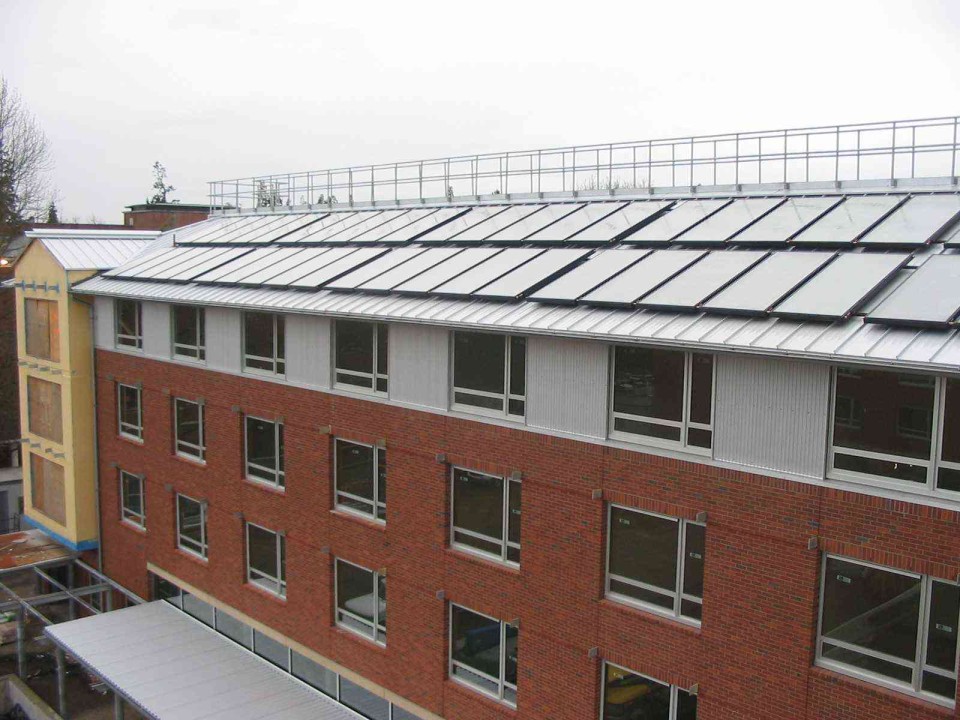University of Oregon Living Learning Center – Solar Hot Water Project

Project Description
In June 2006 University of Oregon installed a 50 collector solar water heating system on the 4th story roof of the north building of the Living Learning Center. The Living Learning Center is a new student dormitory located at 1475 E.15th on campus across from the Recreation Center. This system is the second largest solar thermal installation in Oregon.
The Solar Water Heating (SWH) is a closed loop design utilizing propylene glycol as the heat transfer fluid. The collector array is comprised of 50 SunEarth model EC-32 selective surface flat-plate collectors. Transfer to the potable water is made with a AIC double wall plate & frame heat exchanger sized to operate at a 15° F LMTD under full sun conditions. Thermal storage is achieved with a 2,100 gallon glass lined ASME tank from Hanson. The system is controlled with a Goldline GL-30 differential temperature controller that operates both the potable & glycol side pumps through 3-phase contactors.
The SunEarth model EC-32 collector has a design flow rate of 0.83 GPM based on water. Correcting this flow rate to an equivalent capacitance rate with a 30% propylene glycol mixture yields a design flow of 0.92 GPM/collector or 47 GPM for the entire array. The potable loop flow rate was sized to match the capacitance rate of the collector loop at 41 GPM.
Heat Exchanger selection was made based on transferring the array output under full sun conditions with a 15° F LMTD. At full sun (320 BTU/hr-fl2), the array is capable of outputting approximately 310,000 BTU/hr at an operating efficiency of 65%. Based on this operating point and the design flow rates indicated above, a 19-plate AIC A200 heat exchanger was selected.
Loop pressure drops were based on the pressure drops of the collector, supply & return lines, heat exchanger, and flow meter. Pipe sizes were selected to keep the flow velocities between 2 and 4 FPS to ensure that entrapped air would be carried through the system but not high enough to create erosion. Generous lengths of equivalent piping runs were assumed to accommodate the various valves & fittings in the lines.
Project Partners:
Oregon Department of Energy
Oregon Cascade Plumbing and Heating
Tom’s Plumbing and Heating
Project Details
Client University of Oregon
Skills Solar Water Heating
